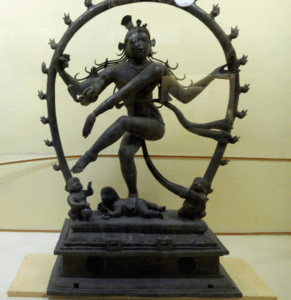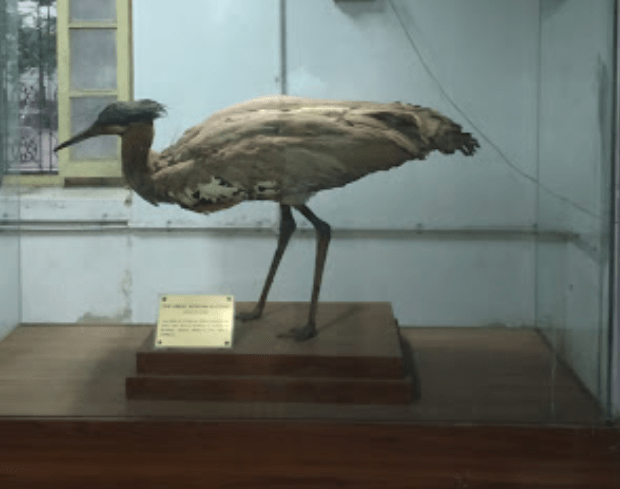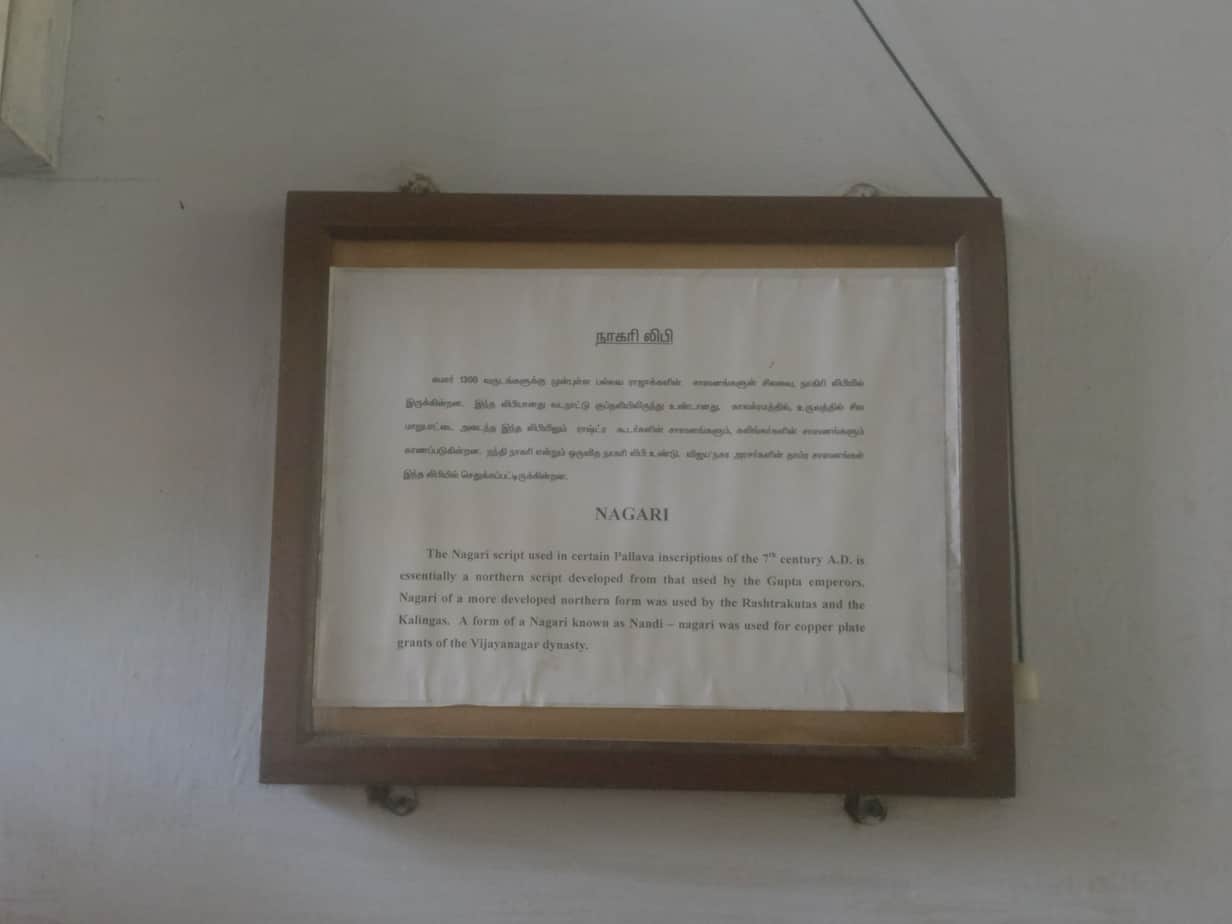A fascinated child stands transfixed in the Zoology section of the Government museum in Egmore, her attention drawn by the giant skeleton of a whale on display, spanning the length of the room. This is is just one of many intriguing artefacts in India’s second oldest museum. While the museum can boast of a steady stream of visitors, with enough in store for everyone who would like to spend an hour in learning, there are several aspects of the museum that leave plenty of room for improvement and are crying for attention from the state.
The massive collections of the Egmore museum are housed in several different buildings, with sections devoted to anthropology, stone sculptures, bronzes, zoology, natural history, numismatics, national art and even a children’s museum in the premises. The well-maintained, green campus is a welcome relief from the busy city, and many visitors are seen taking refuge under the various trees. The buildings that house the galleries are from the 19th century, built in the Indo-Saracenic style seen across many heritage structures in Chennai. However, there are obvious issues that seem to have been pushed under the carpet without proper necessary action.
Bronzes in high regard
The museum’s bronze collection is the most renowned and celebrated, with exhibits dating back to the 11th – 17th century. The gallery houses over a thousand pieces with sizable collections from the Chera, Chola and Pallava periods. A 11th century Arthanareeshwara and a majestic Nataraja occupy pride of place and receive many visitors who are left in admiration.
“I’m incredibly fascinated by the pieces here. The Nataraja, Shiva and Parvati are my favourite pieces, I feel the workmanship exemplifies all that is great about our past. The gallery is well taken care of, I have found that proper care is given and the bronzes are the star attraction. I would love to take a guided tour to know more as there is only so much one is able to glean about the artefacts from the short descriptions”, says Arathi M, a frequent visitor to the gallery.
Challenges galore
But even as the bronzes receive high praise, the zoology and natural history section leave much room for improvement. A knowledgeable visitor lamented the lack of care in preservation of the specimens, instances of mislabeling and shoddy taxidermy. Some of the exhibits are simply hidden to the eye, due to the dust and grime that covers the glass casing, making it impossible to discern what fascinating item is housed in it.
The exhibits of animals, birds, fish and reptiles, while placed in a roomy setting with additional information on digital displays around the hall, could do with more attention and preservation. The taxidermy specimens of birds were found covered in dust and browning, clouding visitors’ understanding of the diverse collection on display.
The challenges faced in maintenance become apparent as one talks to K Sekar, Assistant Director (Technical). “We are maintaining the vast collection in the museum with very few staff. It is not easy to shift each exhibit and move it around from time to time due to space constraints. The buildings also undergo renovation which hampers it. Besides, in a tropical country like ours, humidity, sunlight and dust are key factors that affect all exhibits. The artefacts are placed behind glass and protected and we try to reduce the effect of sunlight to minimise any damage,” he says.
The museum staff also speak of the difficulties in procuring new species for exhibits, starting with the challenge of getting carcasses within a few hours of the natural death of the animals, within which the taxidermy process must be begun. The number of taxidermists who are authorised to do the job is also very few in the state, making it difficult to find expertise that helps preserve the specimens in good condition.
“We have been reaching out to colleges and providing training to students under our strict supervision. Some of them learn enough to be placed with us eventually,” says Sekhar, speaking of the challenge of finding qualified personnel to deal with the precious artefacts.
The sculptures gallery
The stone sculpture section is also one that houses an impressive collection. From north and south Indian to Buddhist and Jain sculptures that span centuries, the collection is housed in the main building. The section however suffers from a lack of adequate information to engage interest. The sculptures often feature one-line labels of the name of the deity or structure depicted and the place or year it belongs to. Visitors remarked on the need for more elaborate descriptions.
The sculptures have also been installed on concrete blocks, raising concerns about potential damage if they are to be moved.
“The collection housed here is vast but much can be done to improve the user experience. The description can be more detailed; some of the exhibits do feature plaques that talk of that era, but it seems as if they are merely taken from Wikipedia entries,” says Shrivats R, a student of history and a visitor to the sculpture gallery.
While the museum offers an audio tour of the sculpture gallery through Story Trails, it can only be used by those with a phone and Internet connection. That dampens the user experience for those who wish to know more without being hooked to their phones on the visit to the museum or visitors who do not have access to both.
Where are the experts?
An upgrade with regard to user experience so as to bring it at par with international standards. is the most common request by those who visit and love the museum.
Historian Nivedita Louis, who curated the exhibit of musical instruments spanning many years and locations, outlines the challenges. “The museum housed many varied artefacts but suffers from a lack of funds and manpower. Then comes the onus on the people to also help maintain the exhibits. When we decided to place a few of the musical instruments outside the glass enclosure for the public to form a better idea, some of them were damaged by the people. Then we had to put them back away. The people must also take ownership and care not to damage valuable and rare items.”
Nivedita also alluded to the difficulties in finding experts to repair and preserve the instruments, an issue that many displays face. “There have been difficulties finding the right people who can repair instruments and artefacts with care. If you take a 300-year-old string instrument, and the strings have to be fixed, there are only a few rare people who would know how to go about it.”
Guided tours led by renowned historians to the stone sculptures gallery and bronze gallery are often sold out, a clear sign that more such avenues to view the artefacts are sought after by users. Such tours help them place the exhibits in context and also provide much more information than are on offer right now. Small acts, such as the turning of pages of Bharathiyar’s manuscript to a new one each day, have found a fan in Nivedita Louis.
The museum offers cheap entry, Rs 15 for adults and Rs 10 for students, and allows everyone to spend many hours in its halls. Hordes of school students were seen immersed in the display in the numismatics galleries, once again indicating the interest among citizens. It is certainly time to pay attention and channel both funds and focus towards overcoming the challenges so that visitors from the city and beyond can be treated to a world-class museum experience.



